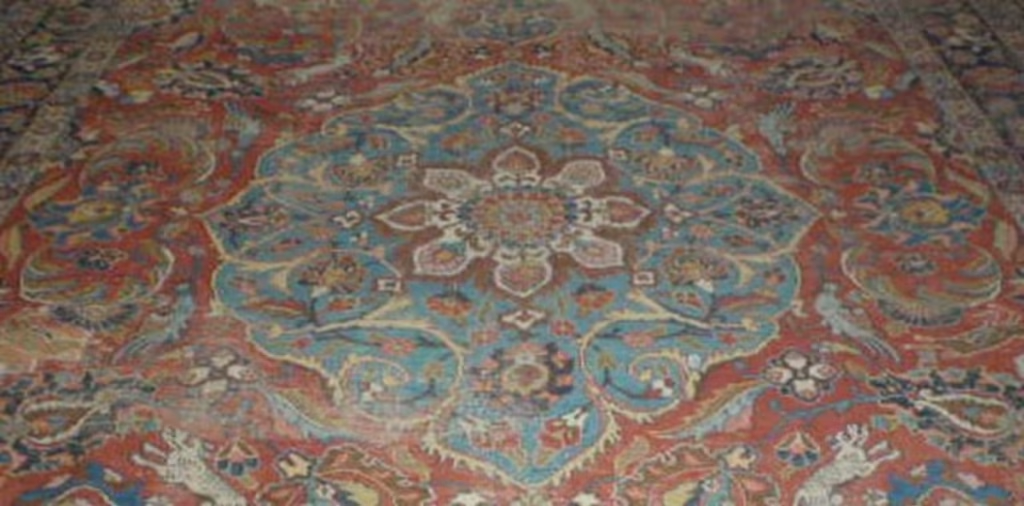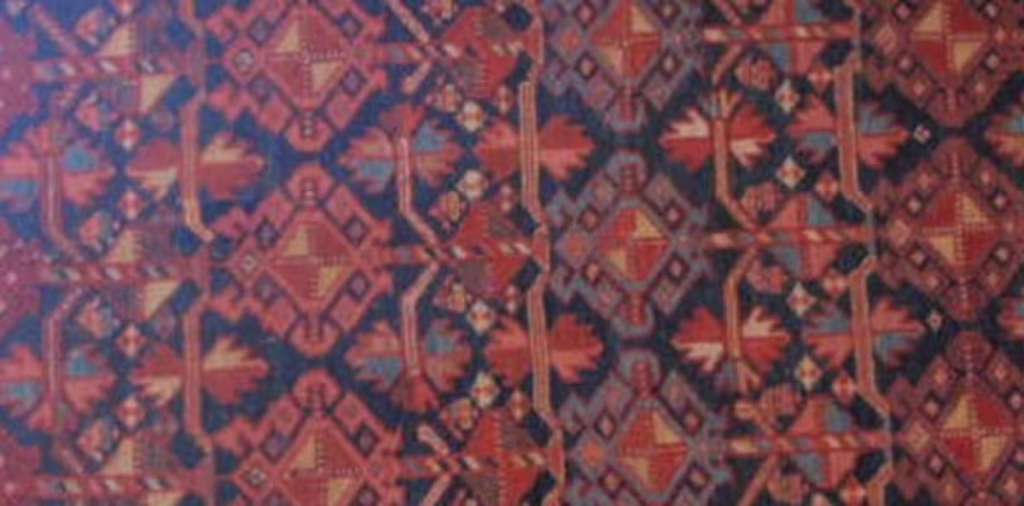History of Oriental Rugs: Ancient Traditions and Development of Carpet Weaving
Ancient Origins
The Oriental rug has a long history, rooted in ancient weaving traditions from regions like the Middle East and Central Asia. While we don’t know exactly when the first rug was made, we can trace the beginnings of rug weaving back thousands of years. These early woven textiles, such as Kelim or Sumakh rugs, were often flat-woven, without a pile.
The Pazyryk rug, one of the oldest surviving knotted rugs, was found in the Altai Mountains, near the Mongolia border. This rug is over 2,500 years old. It measures about 6 feet by 6 feet and was made using the Ghiordes knot. Despite its age, it’s still in excellent condition. The rug features geometric patterns, with images of animals and horsemen.
Rugs in Ancient Cultures
Rugs have appeared in artwork for thousands of years. One example is found in the ruins of Persepolis. The artwork shows an embassy presenting rugs to a Persian king. Ancient writings also mention that knotted rugs were often used in royal palaces and temples.
Today, you can still see ancient rugs in museums. For example, 13th-century rugs from the Ala-ed-Din Mosque in Konya, Turkey, and Ming and Mabry rugs from the 15th century are now housed in the Statens Historiska Museum in Stockholm.
Nomadic Weaving Traditions
Nomadic peoples in the Middle East and Central Asia used rugs for warmth and decoration in their tents. These early rugs often featured geometric patterns. The materials used included wool, goat hair, camel hair, and sometimes silk. In the finest rugs, gold and silver threads were woven in for added beauty and luxury.
The Influence of Persian Carpet Weaving
The reign of Shah Abbas in Persia (modern-day Iran) was a turning point for carpet weaving. Shah Abbas established royal carpet factories and hired skilled artisans. These artisans created intricate and beautiful rug designs that are still admired today. The floral and figurative patterns from this time continue to influence modern rug designs.
One famous example is the Ardabil Carpet, commissioned by Shah Abbas’s father, Shah Tahmasp. This famous rug is in the Victoria and Albert Museum in London. It measures 17 feet by 34 feet and has over 32 million knots.
The Evolution of Rug Materials and Dyes
Early rug makers used natural dyes made from plants, insects, and minerals. However, in the late 19th century, synthetic dyes were introduced. These dyes created new, vibrant colors, like purple, pink, bright yellow, and green. Synthetic dyes were convenient but not as durable as natural dyes. Over time, the use of synthetic dyes became more common, but they sometimes faded faster than natural dyes.
Today, modern synthetic dyes are more reliable and last longer, allowing for brighter and more durable colors.
The Development of Rug Production
In the 19th century, demand for Oriental rugs grew as people in Europe and America began to appreciate their craftsmanship. This led to the development of new rug production methods in places like Turkey, where commercial-grade rugs were produced to meet the rising demand.
After World War II, the Persian rug industry grew further. However, increasing costs for materials and labor created challenges. Despite these issues, Persian rug production remained strong, especially in cities like Tabriz and Kerman, where high-quality rugs were still made.
Preserving Traditional Craftsmanship
Though modern technology has impacted rug production, traditional weaving techniques are still maintained in Iran, Turkey, and other parts of the Middle East. These artisans continue to create beautiful, hand-knotted rugs using centuries-old methods.
It’s important to note that all Oriental rugs are made by hand. Machine-made rugs do not have the same quality or craftsmanship. The process of hand-knotting is essential for the texture and beauty of the rug.
Conclusion
The history of Oriental rugs is a rich tapestry of craftsmanship and cultural tradition. From the ancient civilizations of Persia and Turkey to the royal courts of the Middle East, these rugs remain symbols of luxury and artistry. Whether made from wool, silk, or a mix of natural fibers, Oriental rugs continue to captivate and inspire people around the world.
To continue the story of the Oriental rug’s rich history and development, we move into the discussion of materials used in weaving, including wool, silk, and cotton, which play a vital role in the quality and longevity of these beautiful pieces. The Pazyryk rug, one of the oldest surviving examples from the Altai Mountains, connects to these developments by showing how artisans have historically utilized local resources, such as wool, to create durable and intricate designs. This rug, now housed at the Hermitage Museum in St. Petersburg, remains a testament to the techniques passed down through generations. For further exploration of the materials behind Oriental rugs and their journey through time, you can follow this link to the next part of the blog.


